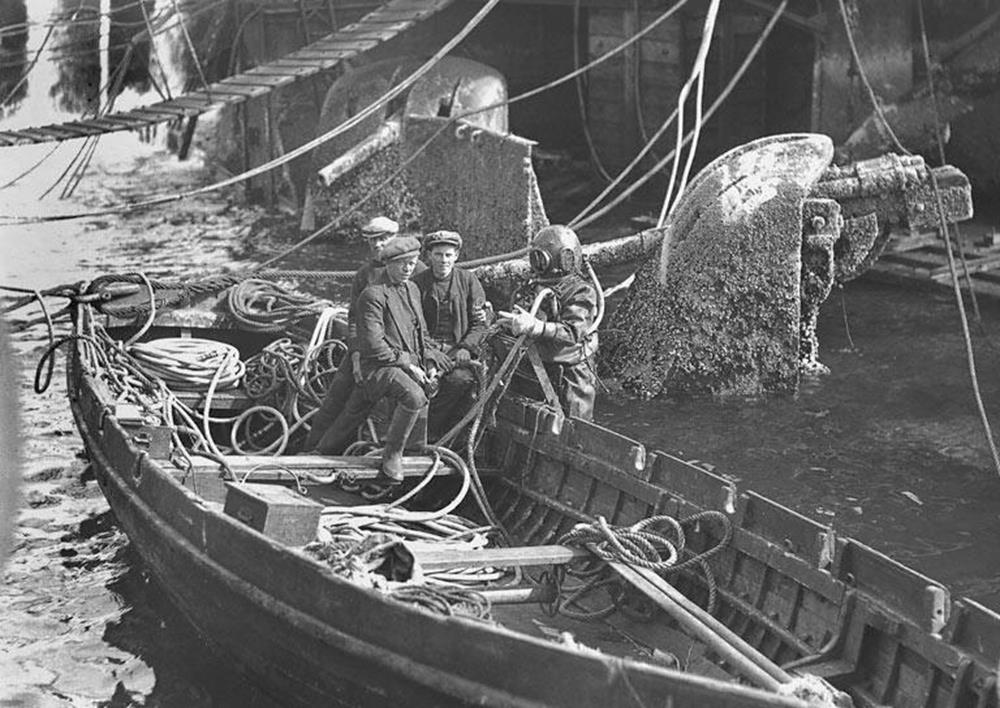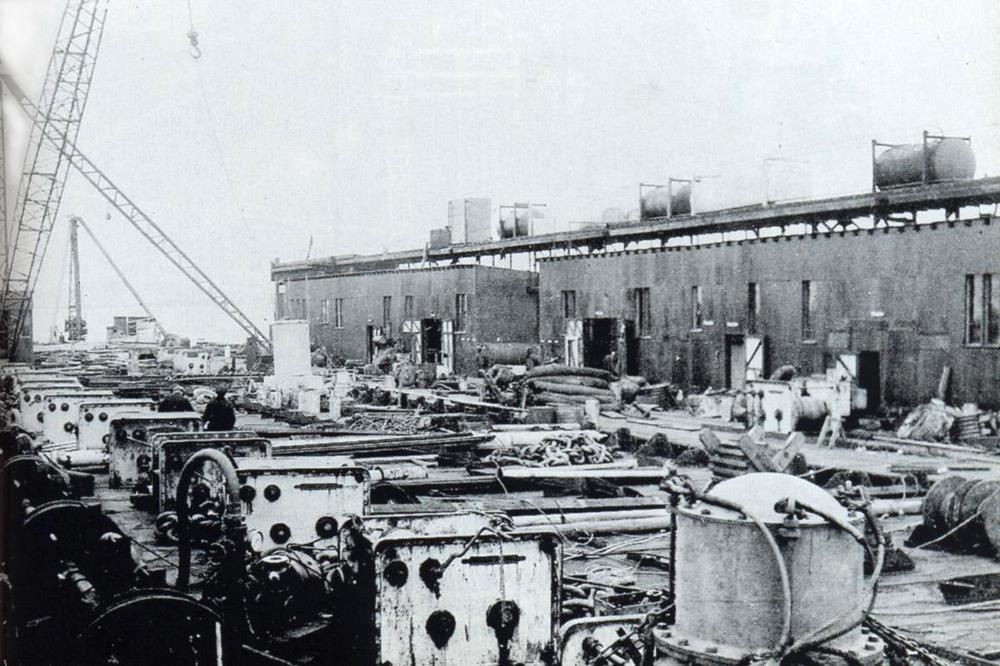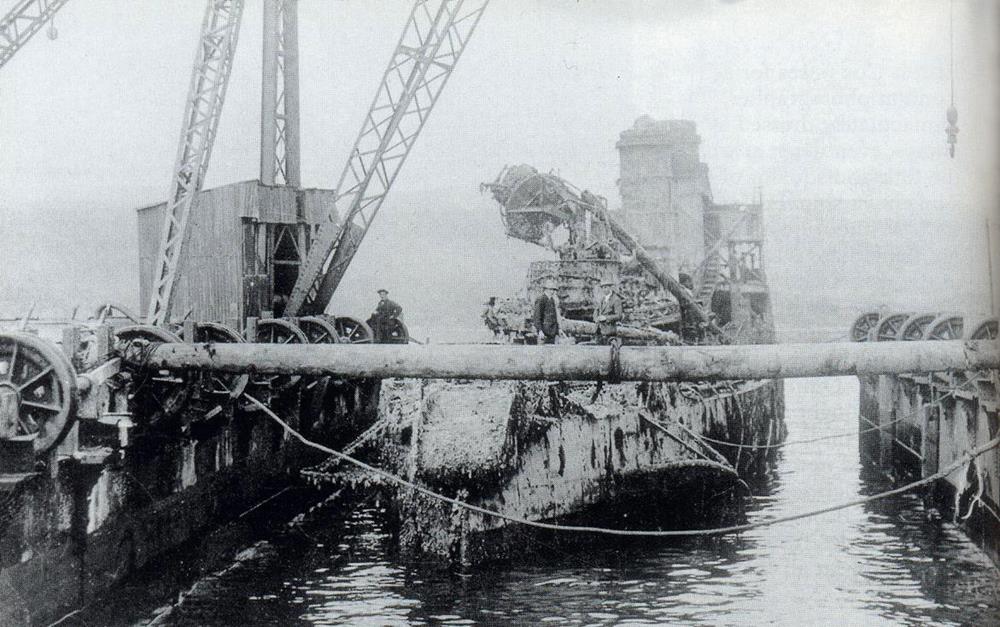46 – Raising the sunken destroyers
Immediately after the war, there was a need for scrap metal to be recycled for post-war industry and rebuilding. Initially this was in plentiful supply for a few years, so the wrecks were ignored. However, as available stocks became exhausted, the price of scrap metal increased, and interest turned to the sunken ships.
In 1923 the Admiralty sold four destroyers to the Scapa Flow Salvage & Shipbreaking Company headed by a local man Mr J. W. Robertson.
In January 1924, Mr Cox of Cox and Danks bought the remaining 20 destroyers along with Seydlitz and Hindenburg. Cox and Danks were ship-breakers and like Robertson had no previous experience of raising ships.
Both companies used divers to pass cables round the destroyers.

Salvage divers working with brass helmets and airlines supplied by hand-operated air-pumps from a support vessel.
The cables were attached to winches on floating docks and were tightened at low tide.

A view of the winches on a floating dock

A destroyer which has been raised by a floating dock
The destroyers were lifted from the sea-bed by the rising tide, then the dock with suspended destroyer was towed towards the shore into shallower water and the process was repeated until the ship was beached. Robertson also used inflatable “camels” to help raise the destroyers.

Robertson’s inflatable camels help raise a destroyer
| < 45 – The fate of the German ships |
| Δ Index |
| 47 – Raising the capital ships – Cox and Danks > |
top of page
